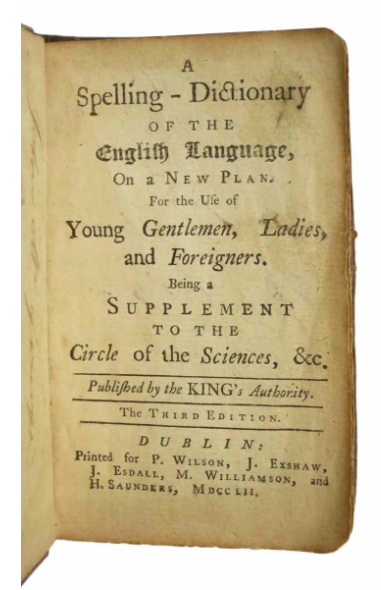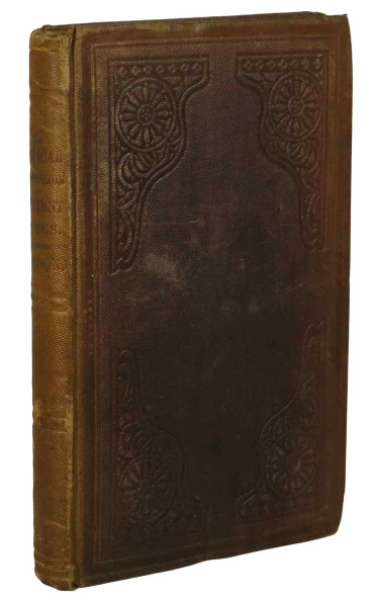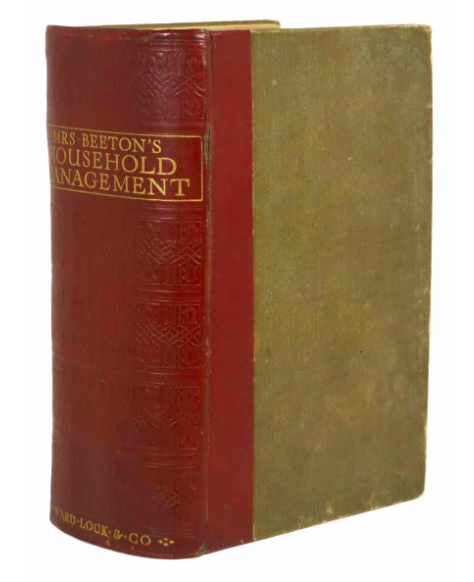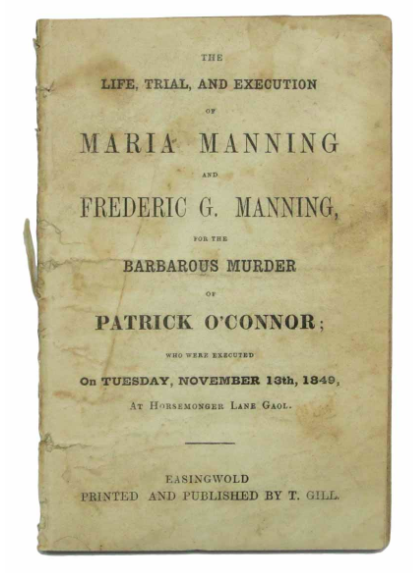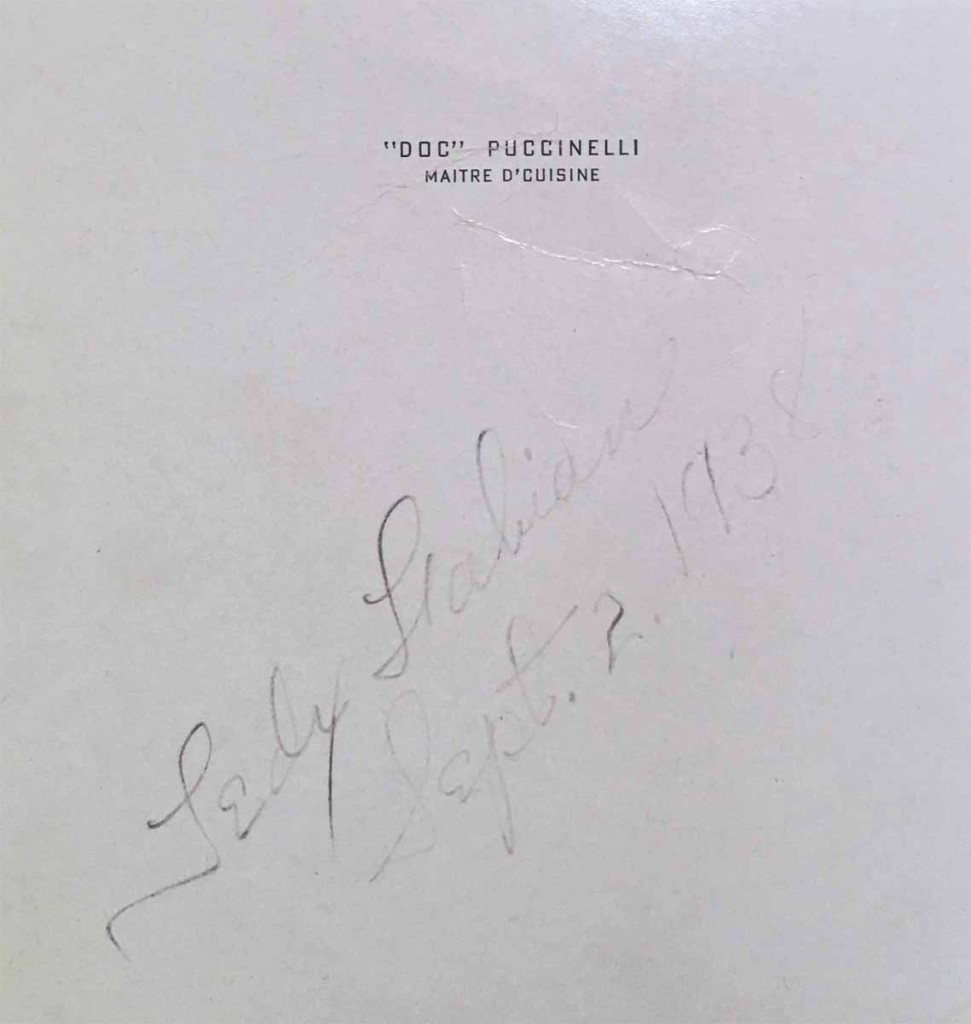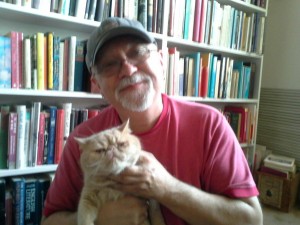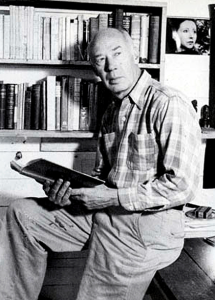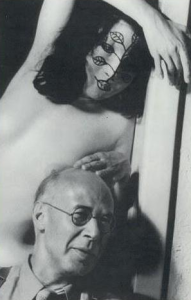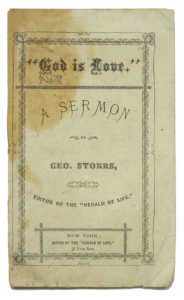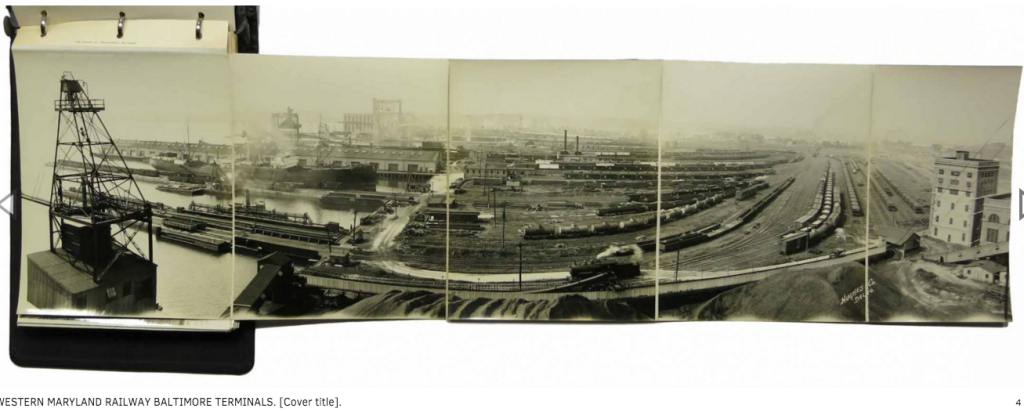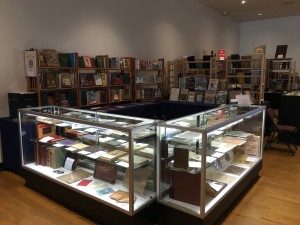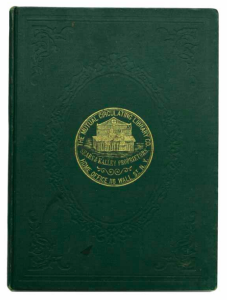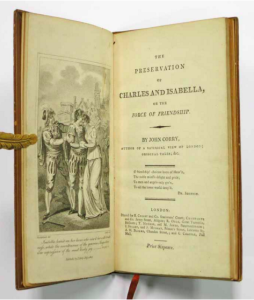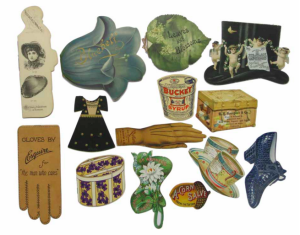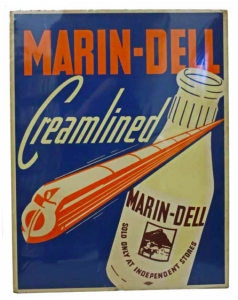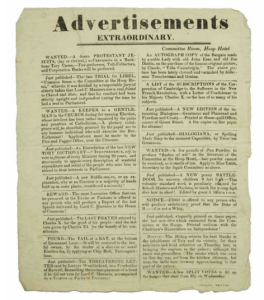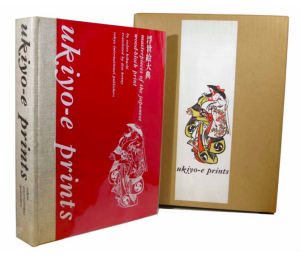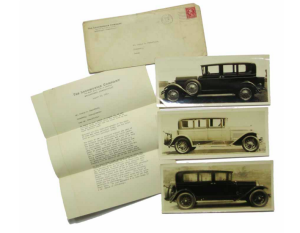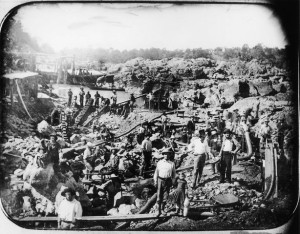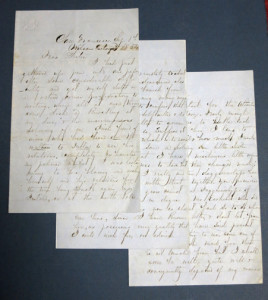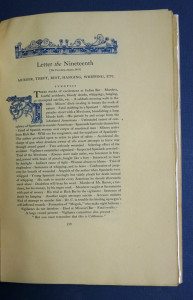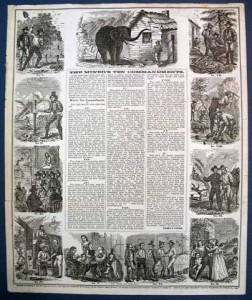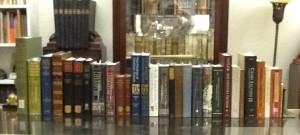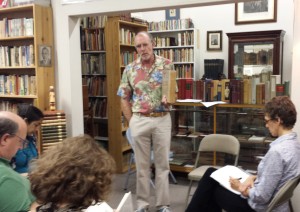The recent fairs have given us a fair amount (pun intended) of new inventory! As we haven’t posted one in a while we thought it might be nice to give you an in-depth look at some of our latest and greatest… though there are many more ready to go home with their new owners! Check out our website’s categories for more info on these and other awesome titles.
We would be remiss in sending our hometown book fairs love without beginning this blog with one of our favorite local finds! DeWitt’s Guide to San Francisco was published in 1900, and is illustrated by nearly 20 engravings! The city guidebook lists tourist sights, hotels, restaurants, banks, businesses, churches, clubs, schools, etc. Love San Francisco? Perhaps you should see what has changed in the last 118 years! See it here.
This cabinet card photograph depicts three young girls, most likely of the Utes tribe, where they resided in the southern end of Colorado. The photograph itself is circa 1890s, when the town of Rouse, Colorado (now a ghost town) was home to, what was in 1888, the largest coal mine in the state. View this amazing piece of 19th century photographical history here.
This 1890 edition of The Care of the Sick has a beautiful gilt illustrated binding – and is a solid Very Good copy of this handbook for Nurses, detailing care for the ill both at home and in the hospital. You love nursing material as much as we do? Check it out here!
We also have a pretty spectacular collection of children’s series books – Nancy Drews, Tom Swifts… Hardy Boys? All can be found on our website and on our shelves! Some series books are not quite so well known as these, however… like this copy of The Bobcat of Jump Mountain. Part of the Boys’ Big Game Series, this title was published in 1920 and our copy still has its original dust jacket! Did we mention it is signed and inscribed by the author, the year of publication? See it here.
Now this may look like nothing special, but in fact these two volumes make up a first US edition of Oliver Twist… and we would be remiss Dickens specialists indeed if we did not include one of his titles in this list! Now certainly Oliver Twist needs no description to provide its storyline or enforce its importance… so let’s just say that this rare set is not often offered in the trade. See it here.
Kind of a strange leap from our classic main man, but here offered as well is a 1941 1st edition of rogue author Henry Miller’s The World of Sex. Bibliographers Shifreen & Jackson have speculated that the 3 states of the first [ours given priority] runs of this work may each have had a run of 250 copies. This first state binding is increasinly uncommon, especially in its original jacket – as ours is! Expand your horizons here.
And while we’re on the subject, here is another fun find from the fairs! We almost feel like the mid 20th century Gilbert Vitalator requires no explanation except for their own marketing! With this vibrator attached to your fingers… “…you’re ready for the thrill of your life. Press your fingers against your body on the spot you wish to massage, and flip the switch. Things happen quickly here, but they can be explained slowly. The Vitalator sets up a vibration which travels to your finger tips and flows through them to your body. But it is not merely a vibration. If you had a pencil in your fingers, set to paper, it would be tracing tiny ovals with lightning rapidity. This rotary movement – this “Swedish massage” action – in the secret of Vitalators superior benefits.” Woohoo! Can be used by men and women, apparently. See this funny body massager here.
This poem, Dickens in Camp was written by Bret Harte shortly after Dickens’ death in the 1870s. Published in a fine press edition in 1923 by John Henry Nash in a run of only 250 copies… and it is signed by the famous publisher! Check out this wonderful tribute to our main man here.
This Red Cross WWII campaign promotion poster advertises Toys for Kiddies – an initiative where patients in military hospitals designed and created handmade toys for children in homes and orphanages at Christmastime. With the materials provided by the Red Cross, apparently the men spent months making and competing to produce the most creative children’s toy of the season. See this 1940s broadside here.
Last but not least, we offer as a tribute to the wonderful OZ themed California fair just a couple weeks ago this beautiful 1st edition, 1st printing of Frank L. Baum’s The Woggle – Bug Book, inscribed by the author to one Ruth Bailey Ingersoll in 1905 – the year of its publication. Said by bibliographer Bienvenue to be “remarkably difficult for collectors to find, particularly in good condition. … the large book is one of the most delicate and ephemeral of all Baum’s publications”, we are lucky enough to offer a very pleasing Very Good copy of this unusual early Baum title here at Tavistock Books! Check it out here.

We hope you’ve enjoyed this brief list of some fun new items on our shelves! Stay tuned throughout the rest of book fair season to see more of them.


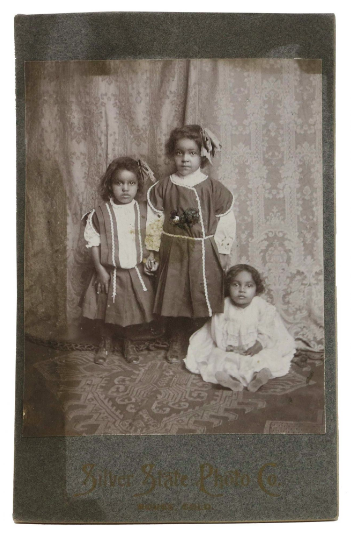



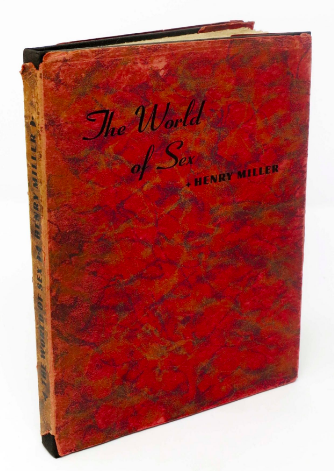
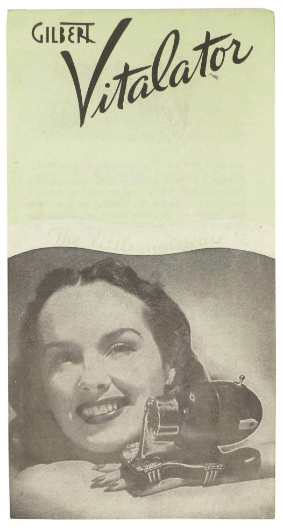
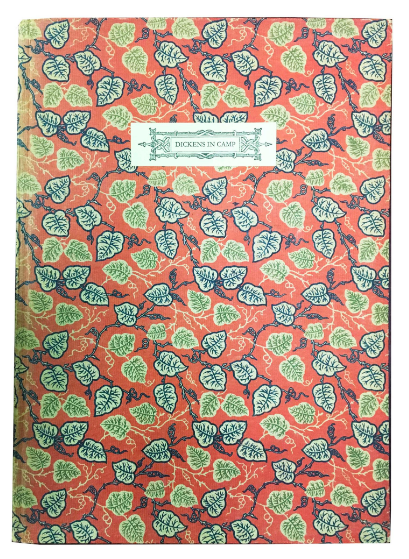
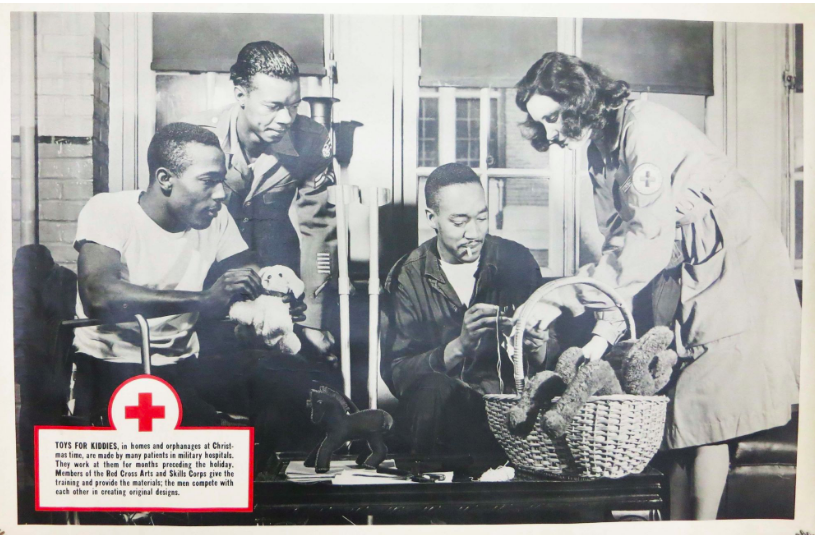
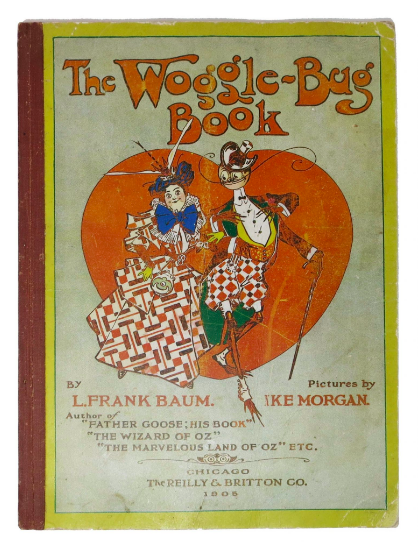

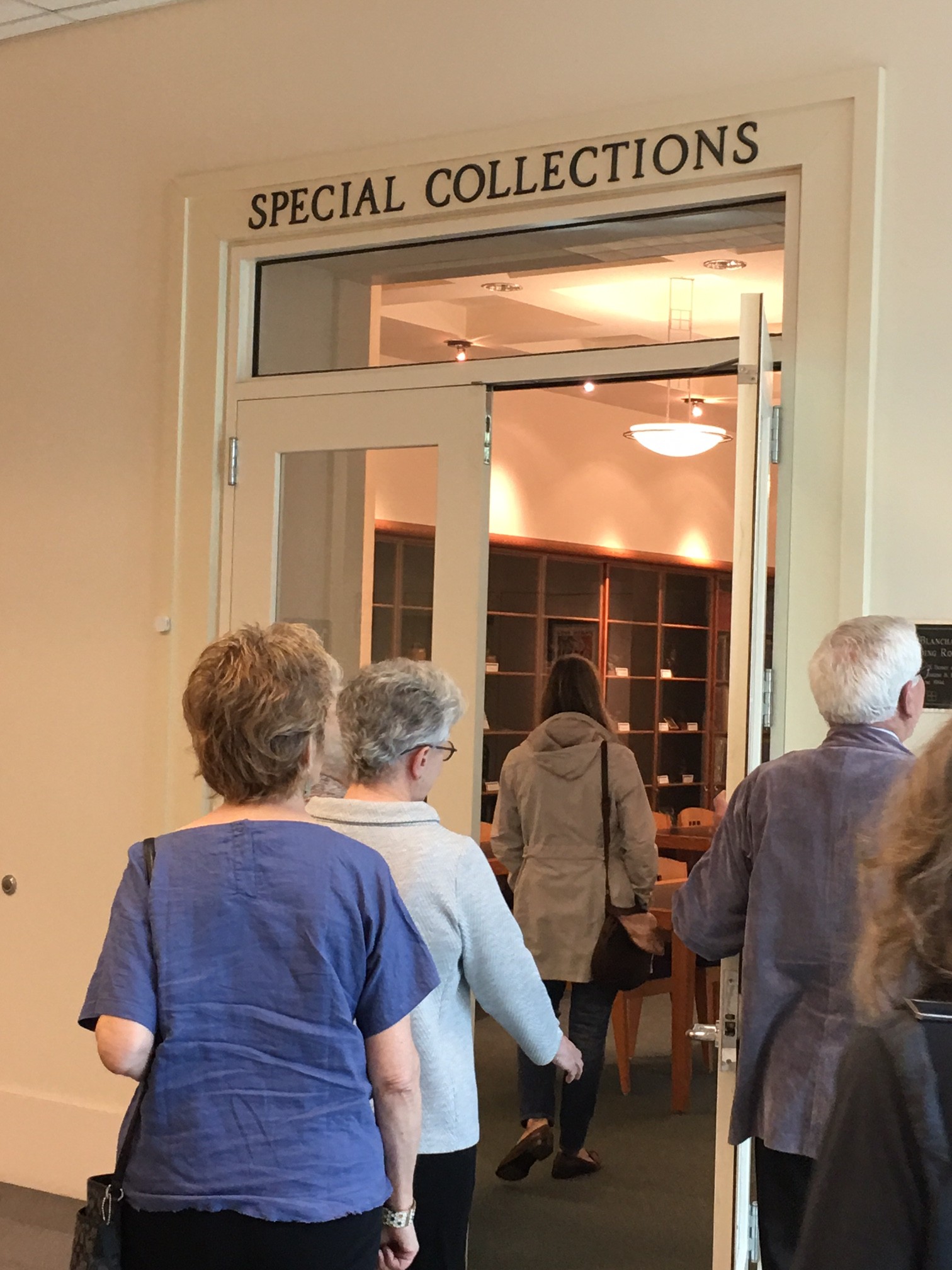
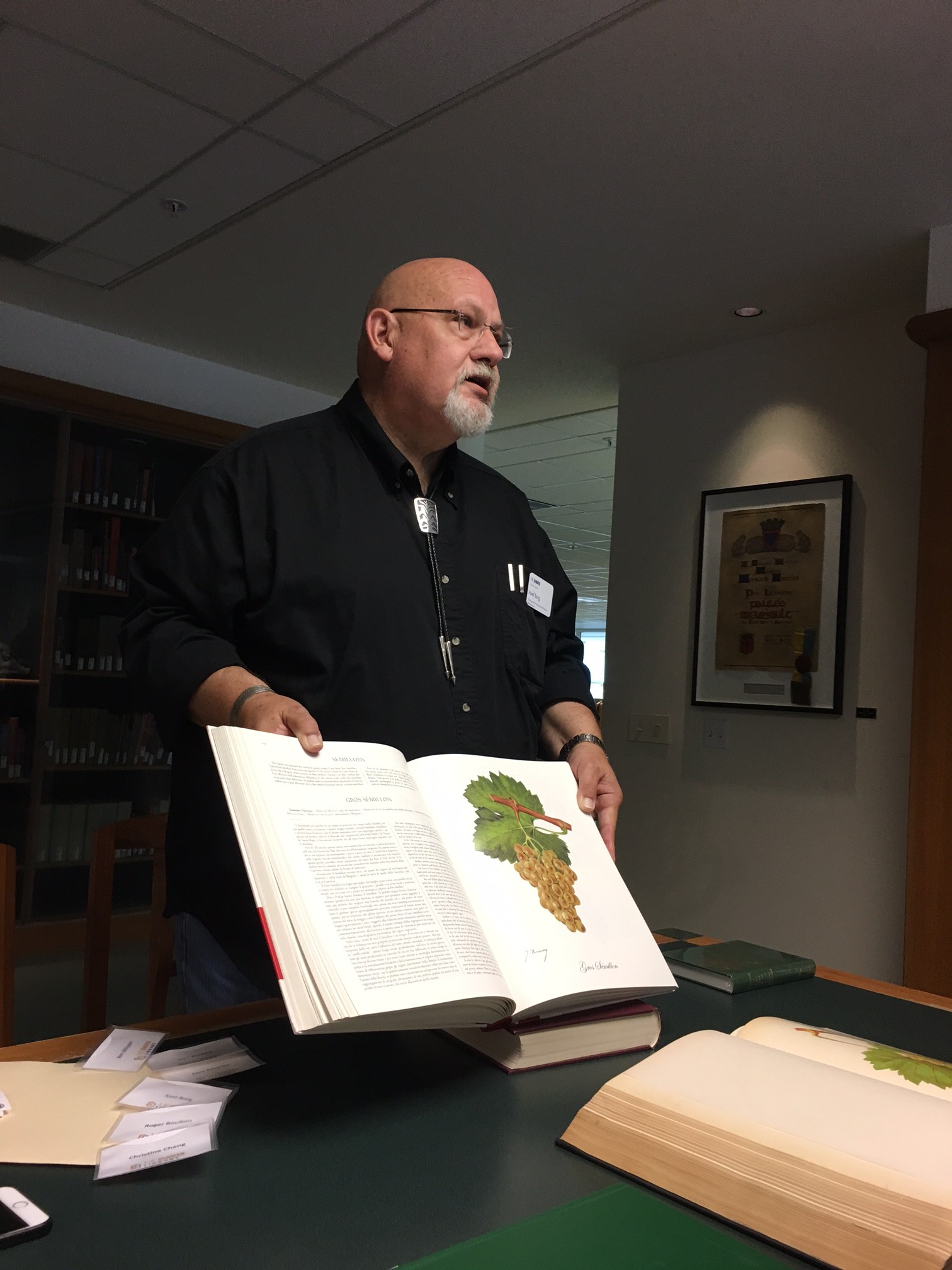 Yours truly, along with 14 other BCC members, on our
Yours truly, along with 14 other BCC members, on our  After giving us an overview of the collection, and its history, we eventually found our way to Special Collections, where Axel tantalized us with one interesting & fascinating item after another… here I wish I’d taken notes, for memory fails me as to most specifics, other than the 1287 deed for a vineyard land transfer & a cute little accordion miniature that on first blush appears to be a wine cork. That said, my fellow attendee, Anne Smith, did, however, take notes, so see her soon-to-be-published BCC piece for more specifics on the books Axel had at show-n-tell.
After giving us an overview of the collection, and its history, we eventually found our way to Special Collections, where Axel tantalized us with one interesting & fascinating item after another… here I wish I’d taken notes, for memory fails me as to most specifics, other than the 1287 deed for a vineyard land transfer & a cute little accordion miniature that on first blush appears to be a wine cork. That said, my fellow attendee, Anne Smith, did, however, take notes, so see her soon-to-be-published BCC piece for more specifics on the books Axel had at show-n-tell. Next on the agenda was a buffet lunch, which, given we were a willing captive audience, included a presentation on projects UC Davis has in the works… one is a interactive social map showing wine-related connections. Intriguing, to say the least. Another is the digitization & searchable compilation of wine price lists, et al. For food & drink historians, invaluable.
Next on the agenda was a buffet lunch, which, given we were a willing captive audience, included a presentation on projects UC Davis has in the works… one is a interactive social map showing wine-related connections. Intriguing, to say the least. Another is the digitization & searchable compilation of wine price lists, et al. For food & drink historians, invaluable.


